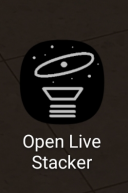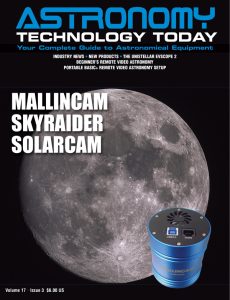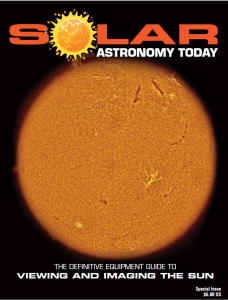Open Live Stacker is a new free and open-source application for live stacking on Android and Linux which has been released in beta by Artyom Beilis. Open Live Stacker uses Web UI for virtually all interaction. It gives an advantage of both remote access to the application and portability – something that allows easy implementation of Android support.
 As Beilis notes, “I’ve been looking for a portable and lightweight solution for live stacking. Most of live stacking software requires Windows laptop to run. However almost everybody has a small computer in hand – your smartphone or tablet that is very capable. Some vendors provide an SDK for Android (ASI ZWO) and some use standard USB protocols like SVBony sv105. So, after I understood in previous attempts that developing UI for Android isn’t something that I can do, I easily switched to developing all in C++ and having web UI. This allowed me creating a software that runs on Linux, can run on Raspberry PI (not tested – but it is Linux) and of course wrap it in an Android App.”
As Beilis notes, “I’ve been looking for a portable and lightweight solution for live stacking. Most of live stacking software requires Windows laptop to run. However almost everybody has a small computer in hand – your smartphone or tablet that is very capable. Some vendors provide an SDK for Android (ASI ZWO) and some use standard USB protocols like SVBony sv105. So, after I understood in previous attempts that developing UI for Android isn’t something that I can do, I easily switched to developing all in C++ and having web UI. This allowed me creating a software that runs on Linux, can run on Raspberry PI (not tested – but it is Linux) and of course wrap it in an Android App.”
As Beilis also notes, “To run Open Live Stacker one need’s to connect either an ASI ZWO or a camera that supports UVC protocol directly to your phone or tablet (you may need a female USB to male type-c/Micro-Usb adapter). And then run the app. Depending on smartphone/tablet capabilities you may need to provide external power for the USB.”
Open Live Stacker features include:
– Android and Linux support
– ASI ZWO and UVC camera support (like SVBony sv105/sv205)
– Support of calibration frames: darks, flats and dark flats
– Support of manual and automatic stretch, auto white balance.
– Live view of stacking result
– Support of tracking mount and non-tracking mount stacking (separate live view and option to pause/resume stacking)
– Software field derotation on AZ Mounts
You can download Open Live Stacker on Github here and access the user manual here.

 And to make it easier for you to get the most extensive news, articles and reviews that are only available in the magazine pages of Astronomy Technology Today, we are offering a 1-year magazine subscription for only $6! Or, for an even better deal, we are offering 2 years for only $9. Click here to get these deals which only will be available for a very limited time. You can also check out a free sample issue here.
And to make it easier for you to get the most extensive news, articles and reviews that are only available in the magazine pages of Astronomy Technology Today, we are offering a 1-year magazine subscription for only $6! Or, for an even better deal, we are offering 2 years for only $9. Click here to get these deals which only will be available for a very limited time. You can also check out a free sample issue here.
The Sun is more active than it’s been in years and if that’s not enough, we have the Annular Solar Eclipse on October 14, 2023 and the Total Solar Eclipse on April 8, 2024! If you’d like to learn more about the technology behind solar observing, solar imaging and more, you can check out our free publication, “The Definitive Guide to Viewing and Imaging the Sun”. You don’t have to sign up or provide any information, simply click here and enjoy reading!



